#Wojciech Kossak
Text

Vive l'Empereur! by Wojciech Kossak
#emperor#napoléon#napoleon#bonaparte#art#wojciech kossak#napoleonic wars#napoleon bonaparte#france#lancers#polish#french#cavalry#infantry#soldiers#troops#napoléon bonaparte#napoleonic#history#europe#european
149 notes
·
View notes
Text

Wojciech Kossak - Galloping horse (n.d.)
618 notes
·
View notes
Text
round 2.7 poll 2
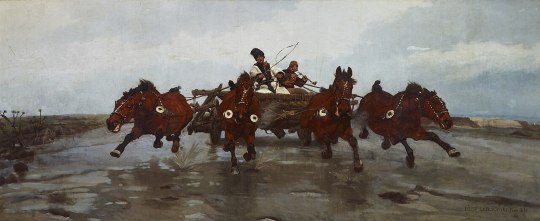

Czwórka (Four-in-hand) by Józef Chełmoński, 1881
propaganda: wyjebutnie mocna ta perspektywa. zaraz cię rozjadą. JEST MOC [this perspective is so fucking powerful. they are gonna run you over. BEHOLD THEIR MIGHT]
Panorama racławicka (Panorama of Racławice) by Wojciech Kossak and Jan Styka (and others), 1894:
propaganda: you HAVE to admire it. it's HUGE. the two famous painters who were in charge of the project fucking hated each other and were constantly bickering over who should be named as the main author. they were chasing each other with buckets of paint around the scaffolding. they were bullying their other collaborators. but the final product is so impressive <3
context: Panorama racławicka is basically a 360° view of the Battle of Racławice, one of the most famous battles of Polish history. It happened during the Kościuszko Uprising and is symbolically viewed as a step forward in the liberation of serfs bc they took an active part in it and were officially recognized for it by the uprising's government and some of them decorated etc etc. You can read about Bartosz Głowacki, a national hero and one of the decorated and liberated serfs here. This painting (which is ENORMOUS. its literally 15 x 114 metres. one hundred and fourteen.) was finished for the 100th anniversary of the battle.
48 notes
·
View notes
Text
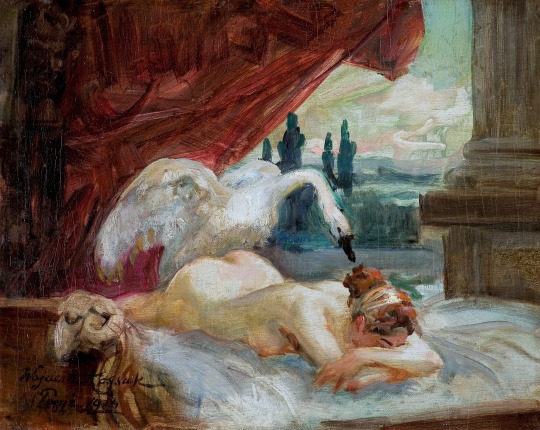
Wojciech Kossak Leda and the swan 1924
115 notes
·
View notes
Text

Wojciech Kossak, Gwiazdka żołnierska (Soldiers' Christmas)
1915, oil on canvas,
#poland#polish art#polish culture#polish paintings#polish painters#european art#european paintings#Wojciech Kossak#kossak#christmas#christmas painting
20 notes
·
View notes
Text
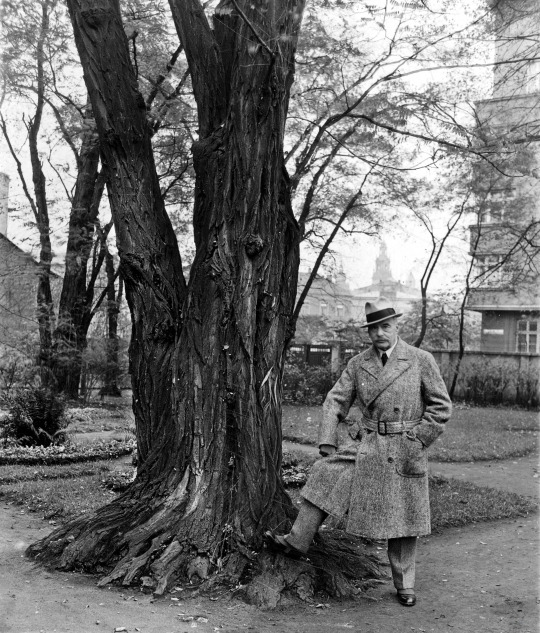
Wojciech Kossak przed swoim domem (1930).
18 notes
·
View notes
Text
The Galician campaign of 1809
Today let me tell you a little bit about the Galician campaign of the Austro-Polish war of 1809, which proved to be a great success for the Duchy of Warsaw.
After the battle of Raszyn there happened the series of small battles, which prevented Austrians from crossing the Vistula, thus leaving the initiative on the right bank of the river firmly with the Poles. So, the Polish forces under Poniatowski’s command moved along Vistula to the South-East, to the lands Austria seized during the latest partition of Poland.
On the 14th of May the Polish Army entered Lublin:
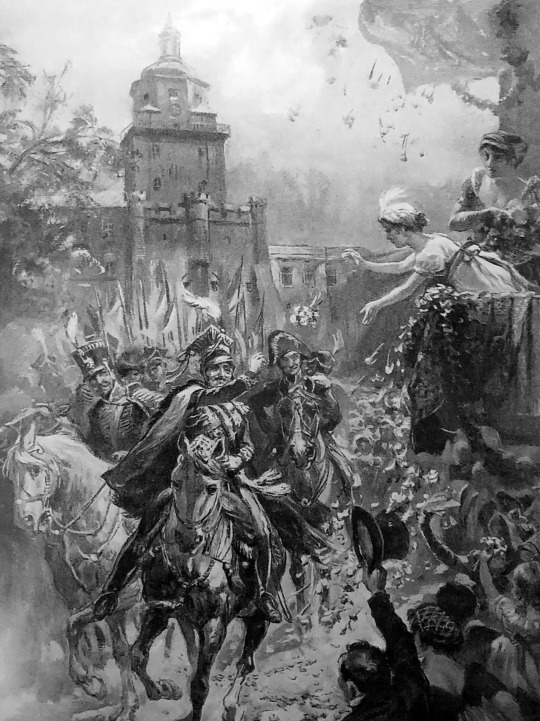
Konstanty Gorski, "Prince Józef Poniatowski enters conquered Lublin in 1809, showered with flowers by ladies"
As Kajetan Koźmian recalls in his memoirs, Poniatowski and his men were greeted with "joy and elation", and in the evening "... the city and the citizens gave a great ball <...> in the house in Korce. Prince Józef honored them with his presence starting the ball."
The next city on the way of the Polish Army was Sandomierz, and after a short siege it was taken on the 18th of May.

Siege of Sandomierz in 1809.

Michał Stachowicz, a scene from the battles in Galicia ("The Capture of Zamość")
Then there was Zamość, where the Polish trooped entered on the 20th of May.
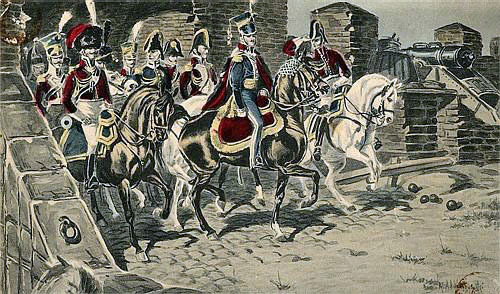
Siege of 1809, M. Adamczewski Entry of Prince Poniatowski to Zamość (postcard)
On the 27th of May the Polish advanced forces even reached the city of Lwów, but prince Józef wasn’t among them.
Meanwhile the Austrians under command Archduke Ferdinand realized the precariousness of their position in the center of Poland, and on the 1st of June left Warsaw for the south.
Poniatowski, for his part, decided not to engage with the Austrian, focusing instead on "liberating” as much Galician land as possible.

Prince Józef Poniatowski seeks information from local peasants in Galicia in 1809, a photo of Stanisław Bagieński's painting
On the 3rd June there appeared the third participant of the events - Russian forces crossed the Austrian border to Galicia as well. And though formally they were acting as Napoleon’s ally, as was prescribed in the Tilsit Treaty, their real goal was to prevent the Poles from taking too much of the Austrian-held territories.
So, to outwit the Russians prince Józef was taking Galician cities not in the name of the Duchy of Warsaw, but in the one of emperor of the Frenchmen. Like the proclamations were being made in the name of Napoleon, the eagles on the coats-of-arms replacing the Austrian ones were not Polish and French etc.
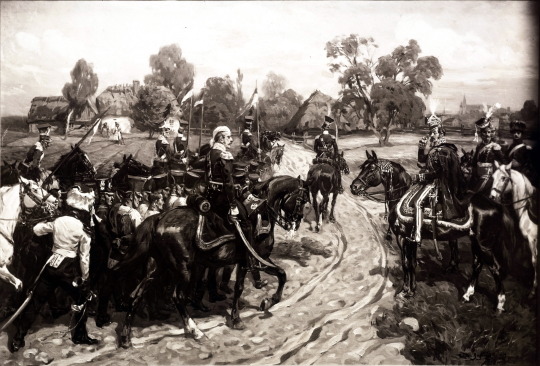
Lancers lead Austrian prisoners of war near Kraków in 1809, in front of Prince Józef Poniatowski, a photo of Stanisław Bagieński's painting
Then, in the outer theater of war on the 6th of July the French defeated the Austrians at the Battle of Wagram. And according Franco-Austrian truce signed five days later the land division was to take place along the line where the troops were at the time of receiving news of the truce, not at the time its signing.

The Austrian army leaves Wawel, a postcard based on the painting of Wojciech Kossak
And so began the race between Russians and Poles, to advance to as farther as possible.
In the middle of July both armies reached Kraków.

PRINCE JOSEPH'S ENTRY TO KRAKOW. A drawing by Jan Feliks Piwarski.
And there the clash of the interest took place.
Poniatowski approached the city from the side of St. Florian's Gate, but it turned out that the Austrians, wanting more comfortable terms of capitulation, had already let Russian troops into Kraków.
The Russians, namely the Cossacks of General Sievers, wanted to deny Poniatowski passage. But Prince Józef, as Dezydery Chłapowski recalls in his memoirs, "draw his broadsword and with together his staff galloped into the gate through the Cossacks". The Polish infantry followed its commander "in a double step <...> so that the Cossacks were pressed against the walls of the gate." Seeing this, Mariampol's hussar regiment, which was stationed at that time in the market square, make a decision to put up resistance and due to this, the whole Polish army was able to enter the city.

Michał Stachowicz, The entry of Prince Józef Poniatowski into Krakow on July 15, 1809
Then, as Ambroży Grabowski recalled, when prince Józef’s troops reached the market square, “in front of the church of St. Wojciech, the magistrate went out to meet the prince, to give him the keys of the city”.
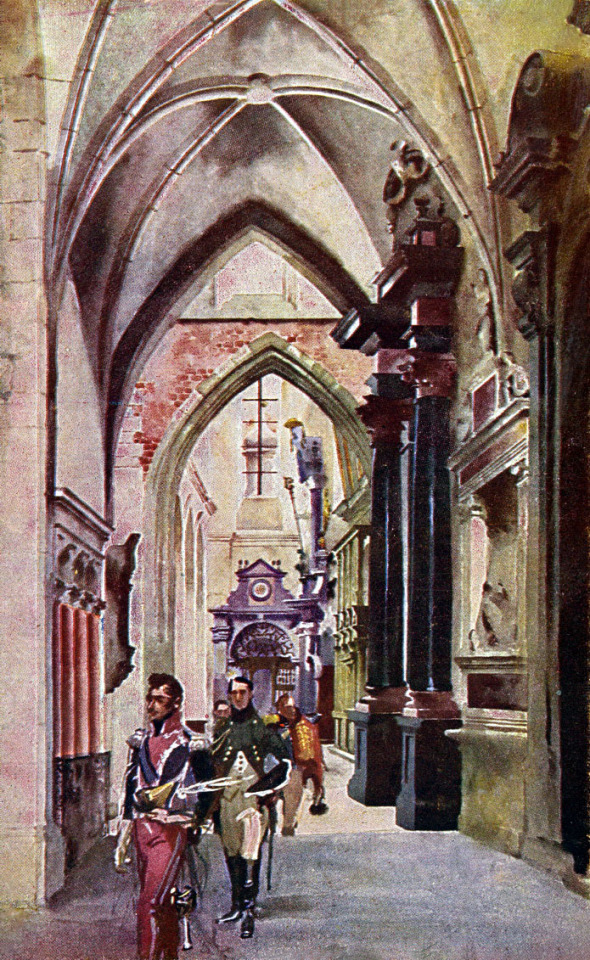
Józef Poniatowski in the Cathedral after Kraków was taken from the Austrians, an image by Stanisław Tondos and Wojciech Kossak
Most probably prince Józef visited the Wawel cathedral during his sojourn in Kraków that time. (In a small voice: little did he know that in 8 years he’ll be buried there...)
And after exactly a month since the Polish troops entered Kraków, there was a ball arranged in the Cloth-hall, the image depicting it I have already posted here.
#Poniatowski#Jozef Poniatowski#józef poniatowski#1809#Galicia#Lublin#Sandomierz#Zamość#Kraków#Austro-Polish War#Konstanty Gorski#Michał Stachowicz#Stanisław Bagieński#Wojciech Kossak#Feliks Piwarski#Kajetan Koźmian#Dezydery Chłapowski#ambroży grabowski
32 notes
·
View notes
Text

Street scene in Warsaw, Poland
Polish vintage postcard, illustrated by Wojciech Kossak, mailed in 1916 to Paris
#street#historic#photo#briefkaart#vintage#warsaw#poland#sepia#photography#carte postale#paris#wojciech kossak#postcard#scene#mailed#postkarte#postal#tarjeta#ansichtskarte#1916#old#wojciech#ephemera#illustrated#postkaart#polish#kossak
11 notes
·
View notes
Text
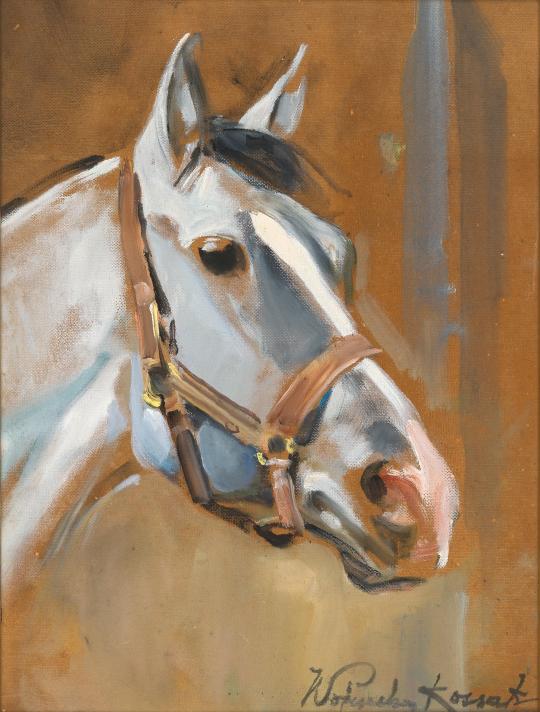
Wojciech Kossak - A Horse’s Head in Profile
26 notes
·
View notes
Text
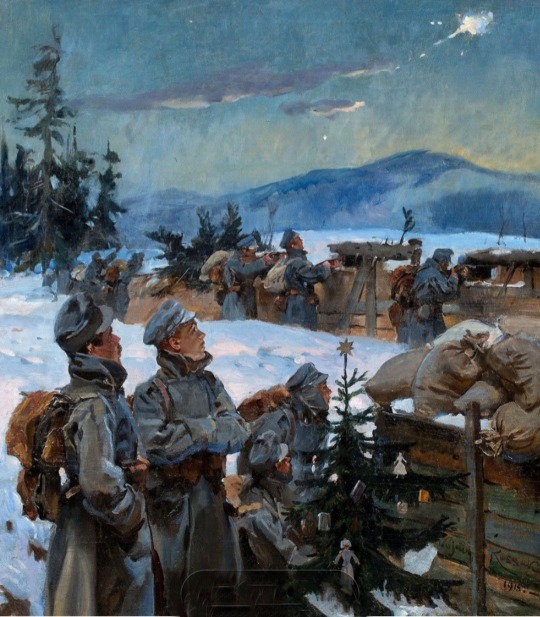
A Soldiers Christmas by Polish artist Wojciech Kossak 1856- 1942.
0 notes
Text

Battle of the Pyramids by Wojciech Kossak
#wojciech kossak#art#battle of the pyramids#egypt#napoléon#napoleon#bonaparte#napoleon bonaparte#france#french#ottoman empire#ottomans#mamluks#history#napoléon bonaparte#mamluk#ottoman#french republic#french revolutionary wars#egyptian#cavalry#egyptian campaign#napoleonic#europe#european#pyramids
51 notes
·
View notes
Text
round 1.7 poll 4


Panorama racławicka (Panorama of Racławice) by Wojciech Kossak and Jan Styka (and others), 1894:
propaganda: you HAVE to admire it. it's HUGE. the two famous painters who were in charge of the project fucking hated each other and were constantly bickering over who should be named as the main author. they were chasing each other with buckets of paint around the scaffolding. they were bullying their other collaborators. but the final product is so impressive <3
context: Panorama racławicka is basically a 360° view of the Battle of Racławice, one of the most famous battles of Polish history. It happened during the Kościuszko Uprising and is symbolically viewed as a step forward in the liberation of serfs bc they took an active part in it and were officially recognized for it by the uprising's government and some of them decorated etc etc. You can read about Bartosz Głowacki, a national hero and one of the decorated and liberated serfs here. This painting (which is ENORMOUS. its literally 15 x 114 metres. one hundred and fourteen.) was finished for the 100th anniversary of the battle.
Pochodnie Nerona (Nero's torches) by Henryk Siemiradzki, 1876:
propaganda: Siemiradzki..... you and your ancient roman fascination....... ilu. the small details and the decorations are so intricate and well done. the light is incredible. there is a TIGER. just lovely
46 notes
·
View notes
Text
Polish artists in their studios
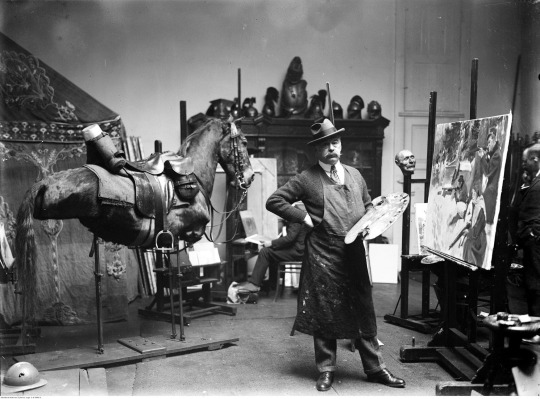

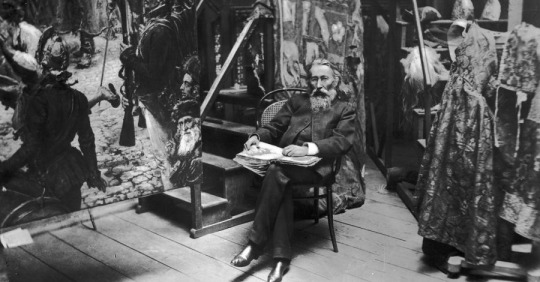
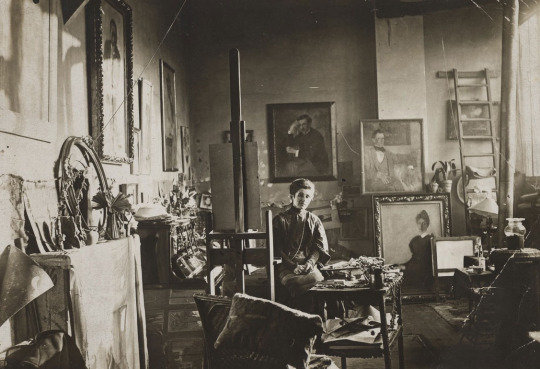

Wojciech Kossak, Wojciech Weiss, Jan Matejko, Olga Boznańska, Józef Mehoffer
9 notes
·
View notes
Text
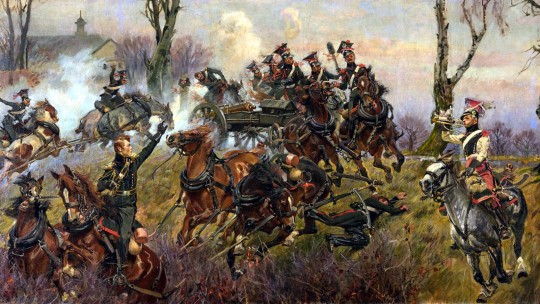
1809 04 19 Raszyn, Batería polaca - Wojciech Kossak
12 notes
·
View notes

